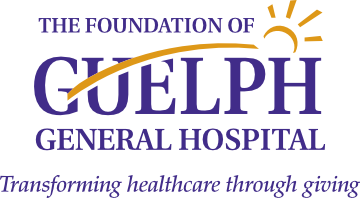Specialized Monitor/Defibrillator Units: A Vital Tool for Vital Signs Monitoring
“They are spectacular.”
GGH’s Emergency Department (ED) Clinical Educator, Lisa Groulx, can’t say enough about the seven new monitor/defibrillator units in Emergency Department. The units are part of an order of 16 that arrived at the Hospital in the last few months, at a cost of about $250,000, thanks entirely to donor support.
The units help staff provide care to the most critically ill patients in the department. Monitoring a patient’s vital signs is so important. This usually happens via a central monitoring system, but the new units are portable. This is vital for the patient who needs care in another part of the Hospital, like the Intensive Care Unit or the Operating Rooms, or for the patient who is transferred to another hospital.
The monitors are also used when someone’s heart fails and resuscitation is necessary. In this case, the defibrillator component of the unit may also be used.
Part of cardiac resuscitation involves chest compressions. Emergency Department Physician Dr. Daren Lin explains that a key enhancement of the new units is that they provide immediate feedback about the quality of chest compressions. This is so important, as the better the quality of the compressions, the better the outcome for the patient. The unit gives both visual and audible cues about the speed and force of their compressions.
“It may seem counterintuitive, but it’s easy to apply too much force and speed when the adrenaline kicks in. The heart needs time to fill and pump so it is important to slow to match the cues from the monitor,” elaborates Dr. Lin.
The cues from the unit also allow the leader of the resuscitation effort to see when a compressions are beginning to lag and to swap in a team member with fresh energy. It’s not a stretch to say that this feedback will enhance the rate of survival across Guelph General Hospital.
These new monitor/defibrillator units are key pieces of patient care equipment that are used daily at Guelph General Hospital. In addition to the seven in the Emergency Department, nine others are located in our Intensive Care Unit, Operating Rooms and ECG Department.
The funds came entirely from our community and the purchase would not have been otherwise possible. In fact, one out of every two dollars spent on equipment at GGH comes from a donor.
Knowing that this life saving equipment was only possible due to the generosity of donors, Dr. Lin took the opportunity to say “Thank you for giving us the tools to provide the best care possible to our critically ill patients. You help us save lives.”

